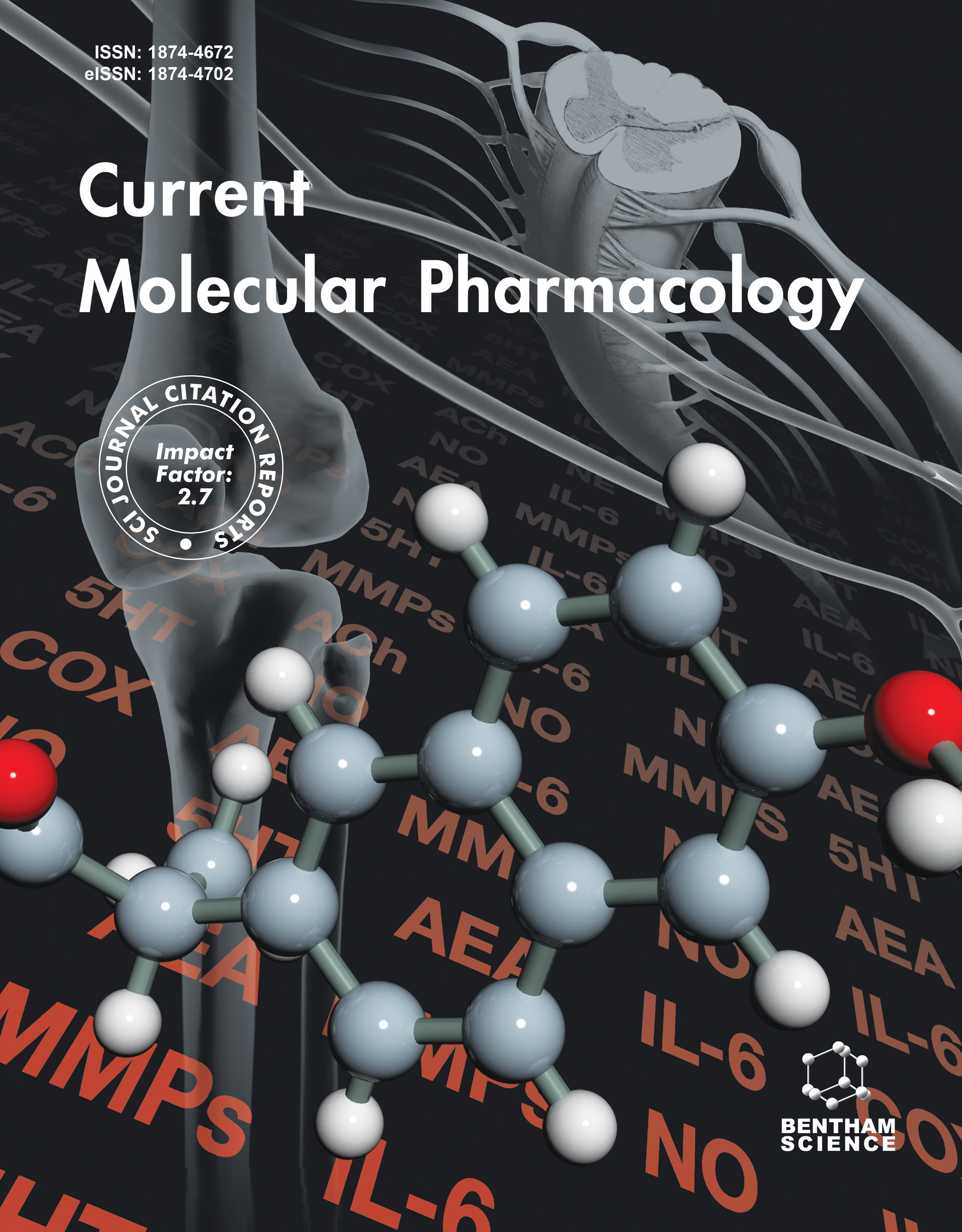- Home
- A-Z Publications
- Current Molecular Pharmacology
- Previous Issues
- Volume 4, Issue 1, 2011
Current Molecular Pharmacology - Volume 4, Issue 1, 2011
Volume 4, Issue 1, 2011
-
-
Neurosteroids and Hepatic Encephalopathy: An Update on Possible Pathophysiologic Mechanisms
More LessCerebral complications of liver failure either due to chronic or acute manifestations lead to a neurological disorder known as Hepatic encephalopathy (HE). Neurosteroids, synthesized in the brain mainly by astrocytes but also in other brain cells independently from peripheral steroidal sources such as adrenal and gonads, are suggested to play a role in the pathogenesis of HE. The mechanisms by which neuros Read More
-
-
-
The Therapeutic Potential of the Wnt Signaling Pathway in Bone Disorders
More LessAuthors: Eric R. Wagner, Gaohui Zhu, Bing-Qiang Zhang, Qing Luo, Qiong Shi, Enyi Huang, Yanhong Gao, Jian-Li Gao, Stephanie H. Kim, Farbod Rastegar, Ke Yang, Bai-Cheng He, Liang Chen, Guo-Wei Zuo, Yang Bi, Yuxi Su, Jinyong Luo, Xiaoji Luo, Jiayi Huang, Zhong-Liang Deng, Russell R. Reid, Hue H. Luu, Rex C. Haydon and Tong-Chuan HeThe Wnt pathway plays a critical role in development and differentiation of many tissues, such as the gut, hair follicles, and bone. Increasing evidence indicates that Wnts may function as key regulators in osteogenic differentiation of mesenchymal stem cells and bone formation. Conversely, aberrant Wnt signaling is associated with many osteogenic pathologies. For example, genetic alterations in the Wnt signalin Read More
-
-
-
Apoptosis Induction by Thalidomide: Critical for Limb Teratogenicity but Therapeutic Potential in Idiopathic Pulmonary Fibrosis?
More LessAuthors: Jurgen Knobloch, David Jungck and Andrea KochThalidomide is a powerful treatment for inflammatory and cancer-based diseases. However, its clinical use remains limited due to its teratogenic properties, which primarily affect limb development. A prerequisite for overcoming these limitations is to understand the cellular and molecular mechanisms underlying thalidomide teratogenicity, which involve induction of oxidative stress, suppression of ubiquitin-mediated protein Read More
-
-
-
HIF-1 as a Target for Cancer Chemotherapy, Chemosensitization and Chemoprevention
More LessAuthors: Elena Monti and Marzia B. GariboldiCells in rapidly growing solid tumors are commonly exposed to chronic or intermittent hypoxia. Hypoxia can induce cell death by multiple mechanisms; however, some cells may adapt by orchestrating dramatic changes in gene expression patterns. In addition, hypoxia exerts a powerful selective pressure on tumor cells, resulting in the emergence of clonal populations whose defects in DNA repair mechanisms f Read More
-
Most Read This Month
Article
content/journals/cmp
Journal
10
5
false
en


